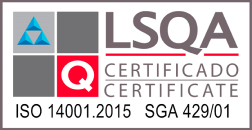Understanding the intricate connection between air quality and climate change is essential in addressing our multifaceted environmental challenges. This article delves into the complex interaction between air pollutants and greenhouse gases, shedding light on their joint impact on human health and the environment.
The Dynamic Interaction
The relationship between air quality and climate change is not isolated; it forms a dynamic and intertwined cause-and-effect matrix. Air pollutants, such as fine particulate matter (PM2.5), ground-level ozone (O3), and sulfur dioxide (SO2), interact with greenhouse gases, predominantly carbon dioxide (CO2) and methane (CH4), to shape the trajectory of atmospheric conditions. While greenhouse gases drive global warming by trapping heat in the atmosphere, air pollutants influence air quality, meteorological patterns, and radiation balance.
Health and Environmental Impacts
The interaction between air quality and climate change has far-reaching consequences for human health and ecosystems. As climate change intensifies, temperature variations and altered precipitation patterns can impact air pollutant concentrations. Higher temperatures can lead to increased ground-level ozone formation, exacerbating respiratory issues and cardiovascular diseases. Simultaneously, weather patterns changes can influence air pollutants’ dispersion and transport, affecting regions far from their sources.
Moreover, the consequences of this relationship extend to the environment. Elevated temperatures can enhance the chemical reactions that form ground-level ozone, deplete the stratospheric ozone layer, and accelerate the degradation of organic compounds. The combined effects of air pollutants and climate change can impair ecosystem health, disrupting plant and animal life.
Mitigation and Adaptation
Recognizing the complex interplay between air quality and climate change has prompted concerted efforts to address both challenges simultaneously. Mitigation strategies target the reduction of greenhouse gas emissions and air pollutants to mitigate their combined impact. They are transitioning to cleaner energy sources, enhancing energy efficiency, and promoting sustainable transportation yielding dual benefits in curbing climate change and improving air quality.
Adaptation strategies aim to enhance resilience to the combined impacts of air quality and climate change. Designing urban areas with improved ventilation, implementing green infrastructure, and formulating public health policies that account for changing environmental conditions enhance the ability to withstand the consequences of this complex relationship.
Synthesizing the Relationship
A comprehensive understanding of the relationship between air quality and climate change can be encapsulated in a table outlining fundamental interactions, consequences, and potential responses. The table below presents a synthesized overview of this relationship:
| Interaction | Consequences | Response Strategies |
| Greenhouse gases and air pollutants interact, altering atmospheric conditions. | Impacts respiratory and cardiovascular health, and ecosystem dynamics | Transition to cleaner energy sources, enhance energy efficiency, and promote sustainable transportation |
| Climate change influences meteorological patterns, affecting air pollutant dispersion. | Alters regional air quality, intensifying health risks | Develop urban design with improved ventilation, implement green infrastructure |
| Elevated temperatures accelerate ground-level ozone formation. | Aggravates respiratory issues and cardiovascular diseases | Formulate public health policies considering changing environmental conditions |
| Climate change accelerates the degradation of organic compounds | Impairs ecosystem health and disrupts biodiversity | Foster ecosystem restoration and conservation efforts |
Conclusion
In unraveling the intricate tapestry of the relationship between air quality and climate change, we uncover the multidimensional impacts they jointly exert on human health and the environment. The interplay of air pollutants and greenhouse gases underscores the necessity for comprehensive strategies that address both challenges simultaneously. By synthesizing this intricate relationship and its consequences, we are better equipped to craft effective policies and interventions that propel us toward a future of improved air quality and a climate-resilient world.











